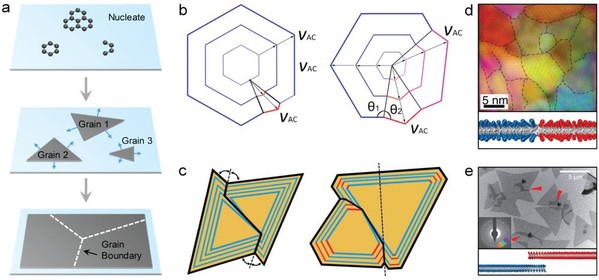Maolin Yu, Zhili Hu, Jingzhuo Zhou, Yang Lu, Wanlin Guo, Zhuhua Zhang.
Abstract:
The coalescence of randomly distributed grains with different crystallographic orientations can result in pervasive grain boundaries (GBs) in 2D materials during their chemical synthesis. GBs not only are the inherent structural imperfection that causes influential impacts on structures and properties of 2D materials, but also have emerged as a platform for exploring unusual physics and functionalities stemming from dramatic changes in local atomic organization and even chemical makeup. Here, recent advances in studying the formation mechanism, atomic structures, and functional properties of GBs in a range of 2D materials are reviewed. By analyzing the growth mechanism and the competition between far-field strain and local chemical energies of dislocation cores, a complete understanding of the rich GB morphologies as well as their dependence on lattice misorientations and chemical compositions is presented. Mechanical, electronic, and chemical properties tied to GBs in different materials are then discussed, towards raising the concept of using GBs as a robust atomic-scale scaffold for realizing tailored functionalities, such as magnetism, luminescence, and catalysis. Finally, the future opportunities in retrieving GBs for making functional devices and the major challenges in the controlled formation of GB structures for designed applications are commented.
